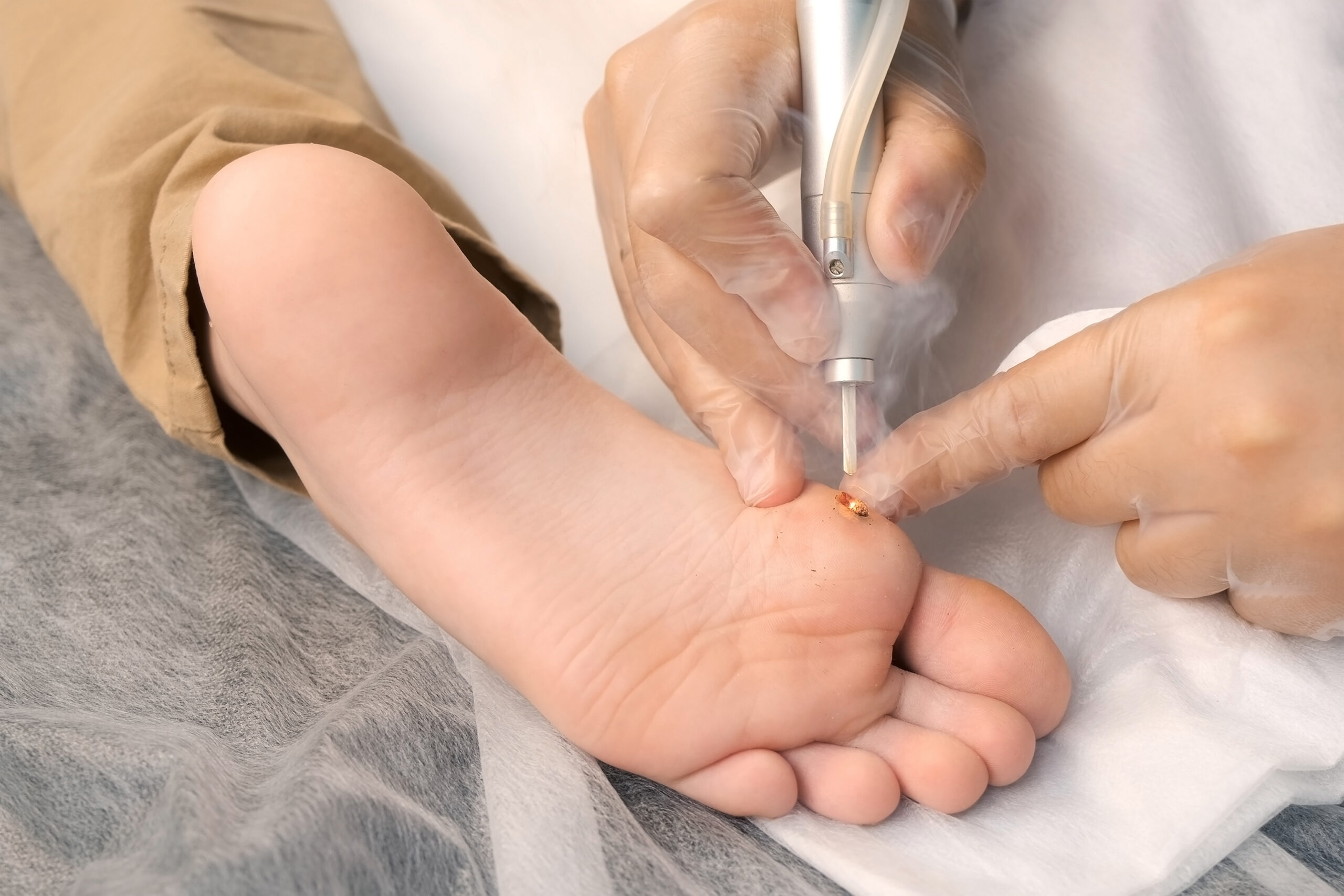Wart Treatment IN UPPER EAST SIDE, NYC
BOARD CERTIFIED PODIATRIST & SPORTS MEDICINE
Serving Upper East Side, Manhattan, Midtown, NYC, NY and the surrounding areas.

A plantar wart is a small growth on the sole of the foot caused by the human papillomavirus (HPV). These warts, often with a rough texture and black spot, can be painful and are commonly found in moist environments. While some may disappear on their own, treatment options include topical medications and procedures like cryotherapy to alleviate discomfort and prevent spreading.
Wart Treatment in Upper East Side NYC
Wart Treatment
Plantar warts are common viral infections that affect the soles of the feet. The choice of treatment depends on the severity of the warts and individual preferences. We offer a variety of treatments for plantar warts:
1. Cryotherapy (Freezing):
Cryotherapy for warts is a medical procedure in which a healthcare provider uses extremely cold temperatures to freeze and remove warts from the skin. It is also commonly known as cryosurgery. It uses liquid nitrogen applied to the wart to kill the virus. Over the next two days following treatment a blister may develop and should be left intact and as it drys up the dead tissue sloughs off.
2. Swift Therapy:
This is a relatively new and innovative treatment that harnesses microwave technology to treat particularly stubborn warts. It can treat large surfaces with precision. The microwave energy is absorbed by the water molecules within the wart tissue, causing rapid heating. This leads to the coagulation (solidification) of proteins and the destruction of the wart cells. The high temperature reached during treatment effectively kills the virus responsible for the wart.
3. Surgical Removal:
Surgical removal of plantar warts is a procedure that involves physically cutting out the wart tissue from the sole of the foot. It’s typically considered when other conservative treatments have failed or when the wart is causing significant discomfort or pain.
For smaller warts: The surgeon makes a small incision (cut) over the wart, carefully removing the wart tissue and any surrounding tissue that may contain viral particles.
For larger or deeper warts: The surgeon may perform an excision. This involves cutting out a larger section of the skin, including the wart and some healthy tissue around it. The incision is typically made in a way that minimizes scarring and allows for proper wound closure.
4. Cantharidin:
This is a topical medication used in the treatment of warts. Cantharidin is derived from the blister beetle and works by causing a blister to form under the wart. This is due to its irritant effect on the skin. The blister separates the wart from the healthy skin underneath. Over the course of a few days, the blister forms and separates the wart from the surrounding skin. As the blister enlarges, the wart becomes elevated. After a few days, the healthcare provider can debride the dead skin and check to see if there is any remaining wart. If wart remains this process is repeated until the wart is removed and new healthy skin grows in its place.
5. Immunotherapy:
Bleomycin is an antibiotic medication that has been used as a treatment option for plantar warts. Bleomycin is administered as an injection directly into the plantar wart. It works by disrupting the DNA of the HPV-infected cells within the wart, leading to cell death and the eventual destruction of the wart tissue. Treatment with bleomycin often requires multiple sessions over several weeks, with each session typically spaced a few weeks apart. The number of sessions required can vary depending on the size and depth of the wart. It’s important to note that bleomycin is considered a second-line or alternative treatment option for plantar warts, typically reserved for cases where other treatments have failed or are not suitable.
It’s important to note that no single treatment is guaranteed to work for every individual or every type of plantar wart. Book an appointment to determine the most appropriate treatment for your specific case.

